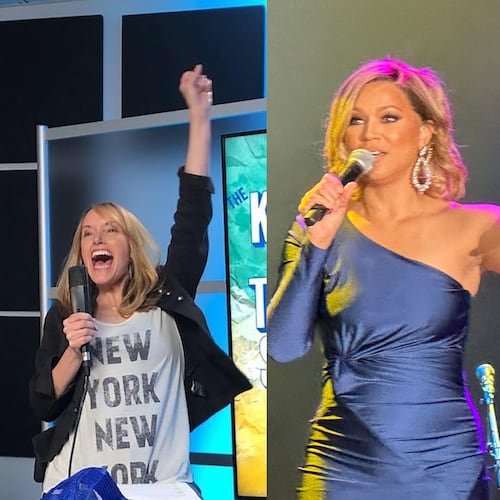Originally posted Wednesday, October 17, 2018 by RODNEY HO/rho@ajc.com on his AJC Radio & TV Talk blog
Ever since Marietta author Heather Greene was a child, she was charmed by "The Wizard of Oz," fascinated by the yin and yang of Glenda the Good Witch and the Wicked Witch of the West.
Decades later, she has taken her fascination with witches and turned it into a book exploring the role of witches in American TV and film over the past 120-plus years called "Bell, Book and Camera," playing off the 1958 witch film "Bell, Book and Camera" starring Kim Novak. Greene will be signing books at Half Price Books in Marietta Saturday from noon to 3 p.m.
“The story of the American movie and television witch is the story of the American woman over time,” she said earlier this week from her East Cobb home, which was festooned in ghosts for Halloween but surprisingly, no witches. “The witch is a demonstration of a strong, independent, self-reliant woman. Whether that is deemed good or bad depends on what’s going on in the culture at the time.”
Greene, who has a bachelor’s degree from Wesleyan University in film studies and a masters in history from Emory University, has a personal interest in tarot cards, herbalism and astrology. There is still a stigma attached to witchcraft today, she said, but “the emergence of the modern witch community and the progressive nature of cultural movements have made it less problematic to most people. There are still strains of society who will look at witches with a sideways glance, but witches aren’t being bullied or beat up like they are in other countries.”
She studied and watched hundreds of TV shows and films over three years to write the book, from silent films to “The Simpsons.”
The 1939 “Wizard of Oz” remains the most influential depiction of witches in film history, she said. It helped that CBS aired it every year on Halloween and the film became a viewing staple for multiple generations. And it stands the test of time, Greene said. “It’s old but doesn’t feel that old,” she said. “Kids are still scared to watch it. They are scared of the Wicked Witch.”
In the 1960s, the most popular TV depiction of a witch was Samantha in the comedy “Bewitched,” where she tries to be a good suburban wife but witchcraft and her witch family keep getting in the way. Greene said its popularity stemmed from not just funny writing and good acting but also the fantasy element: “Samantha had it all. She had magical powers and a husband. She was always the one saving the day with her magic. She was negotiating between two different worlds. It was feeding the women’s movement but still had a foot in the more conservative era.”
In recent decades, she has seen the popularity of witches cycle up and down. During the late 1960s and 1970s, with women pushing for equal rights, witches were heavily populated in horror films such as “Rosemary’s Baby” and “Carrie.”
This was followed by relatively fallow period in the 1980s which Greene described as a period of “Satanic Panic,” a society-based fear about Satanic-based child abuse thrived during the conservative Reagan era.
Witches came back into vogue in the 1990s with films like “The Craft” and “Practical Magic” and TV shows such as “Buffy the Vampire Slayer” and “Charmed.” As reflective of society norms, the witches became more complex.
Films and TV, she said, no longer showed witches as purely “good” or “bad.” Even in the 2013 Disney hit film “Frozen,” Elsa “is both the film’s hero and villain,” she writes. “No Disney princess has ever completely owned her magical existence and remained good. Elsa is the princess, the heroine and the witch.”
A witch comeback has been brewing for several years. A reboot of “Charmed” debuted on the CW this past Sunday, and a dark version of “Sabrina the Teenage Witch” called “The Chilling Adventures of Sabrina,” comes out October 26 on Netflix.
Greene loved the new “Charmed,” which reflects 2018 in multiple ways. The three leads are multi-ethnic as opposed to all white. “Gender politics and the MeToo movement is well integrated,” she said. “One of the sisters is gay. It’s fun and kitschy and campy. It’s exactly what it needs to be.”
About the Author
Keep Reading
The Latest
Featured







